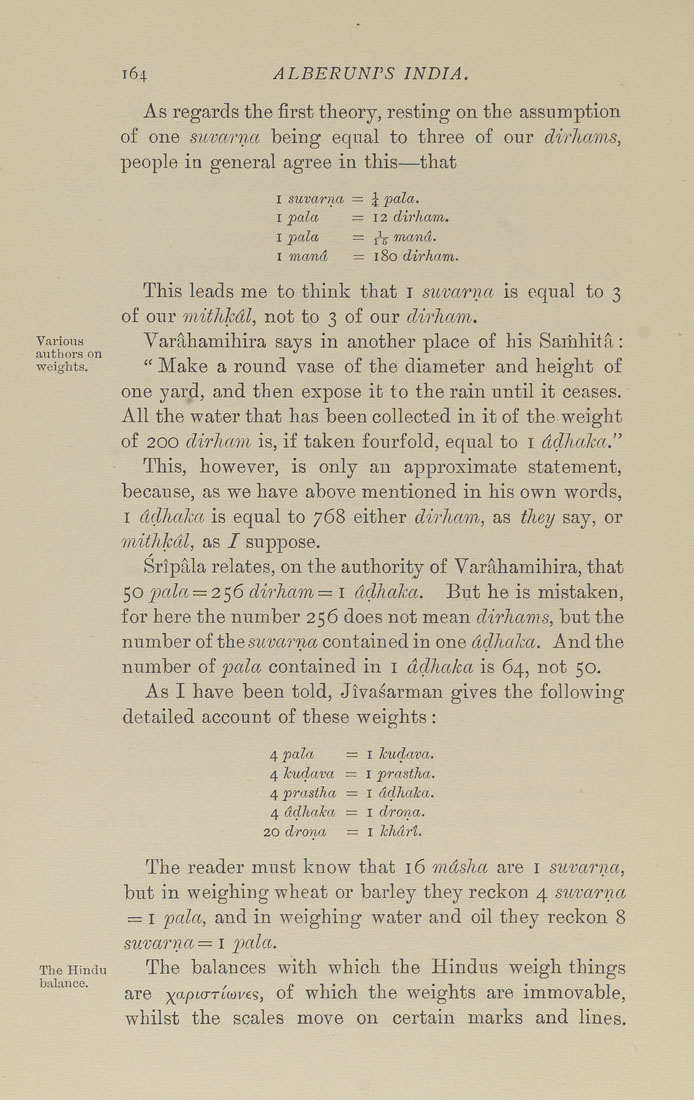Bīrūnī, Muḥammad ibn Aḥmad, Alberuni's India (v. 1)
(London : Kegan Paul, Trench, Trübner & Co., 1910.)
|
||
|
|
|
|
| Page 164 |

i64 ALBERUNPS INDIA. As regards the first theory, resting on the assumption of one suvarna being equal to three of our dirhams, people in general agree in this—that I suvarna = J pala. I pala =12 dirham. I pala = r"5 mand. I mand = i8o dirham. Various authors on weights. The Hindu balance. This leads me to think that i suvarna is equal to 3 of our mithkdl, not to 3 of our dirham. Varahamihira says in another place of his Saihhita: " Make a round vase of the diameter and height of one yard, and then expose it to the rain until it ceases. All the water that has been collected in it of the weight of 200 dirham is, if taken fourfold, equal to I ddihaka." T'his, however, is only an approximate statement, because, as we have above mentioned in his own words, I dclhaka is equal to 768 either dirham, as they say, or mithkdl, as / suppose. Sripala relates, on the authority of Varahamihira, that ^op)ctla—2^6 dirham = i ddhaka. But he is mistaken, for here the number 256 does not mean dirhams, but the number of the suvctrnct contained in one ddhaka. And the number of p)ala contained in i ddhaka is 64, not 50. As I have been told, Jivasai-man gives the following detailed account of these weights : 4 pala = I kudava. 4 kudava — i prastha. 4 prastha = I ddhaka. 4 ddhaka = i droria. 20 droria = i khdrl. The reader must know that 16 mdsha are i suvarna, but in weighing wheat or barley they reckon 4 suvarna ■= I 'pala, and in weighing water and oil they reckon 8 suvarna = i p)ala. The balances with which the Hindus weigh things are x^pia-Ttcoves, of which the weights are immovable, whilst the scales move on certain marks and lines. |
| Page 164 |







